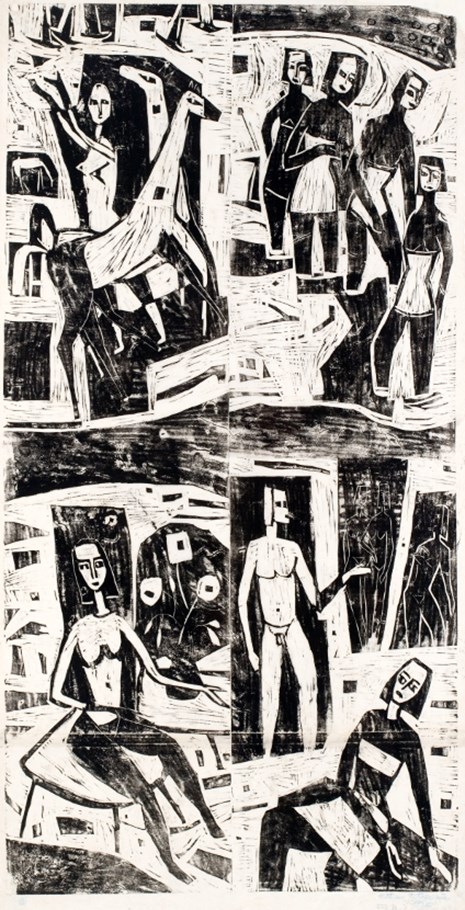Viktoras Petravičius, a graduate of Kaunas School of Art, who settled in the West after the Second World War, fused an interpretation of the Lithuanian folk art tradition with the Expressionism and Neo-Primitivism of the French school.
The woodcut Daily Scenes was made in 1950, immediately after the artist moved to Chicago. At that time he did not have a regular job, and occasionally helped out in stained-glass studios. Maybe this influenced the composition, which is based on the stained-glass principle: the woodcut is composed of four independent pieces, joined like a montage into a uniform spectacle.
It resembles the artist's work from his interwar Paris period, and points to a link with Gauguin, who was influenced by primitive life in Tahiti and mystical eroticism. Petravičius liked to quote Gauguin's words about 'moving back in childhood to my favourite hobby horse'. In other words, he declared his love for a primeval harmony and a simple existence. Such a free and immediate man-nature relationship is expressed in the top two compositions. In the left one, the naked figure of a woman with her arms outstretched seems to be performing a ritual dance with horses thrusting forward. The right-hand composition shows a group of half-naked bathers against an unidentified natural background. The two bottom compositions are more erotic in character: although devoid of external action, they render the intimate man-woman relationship more explicit. The draughtsmanship is generalised, free of idealisation, and intentionally rough. The images are decorative and laconic; the picture is dominated by the contrast between the black and white areas, and the rhythmic arrangement of the elements of the composition. The artist was not over-scrupulous about precision in the printing process either: the white gaps between individual prints function as additional means of expression.



